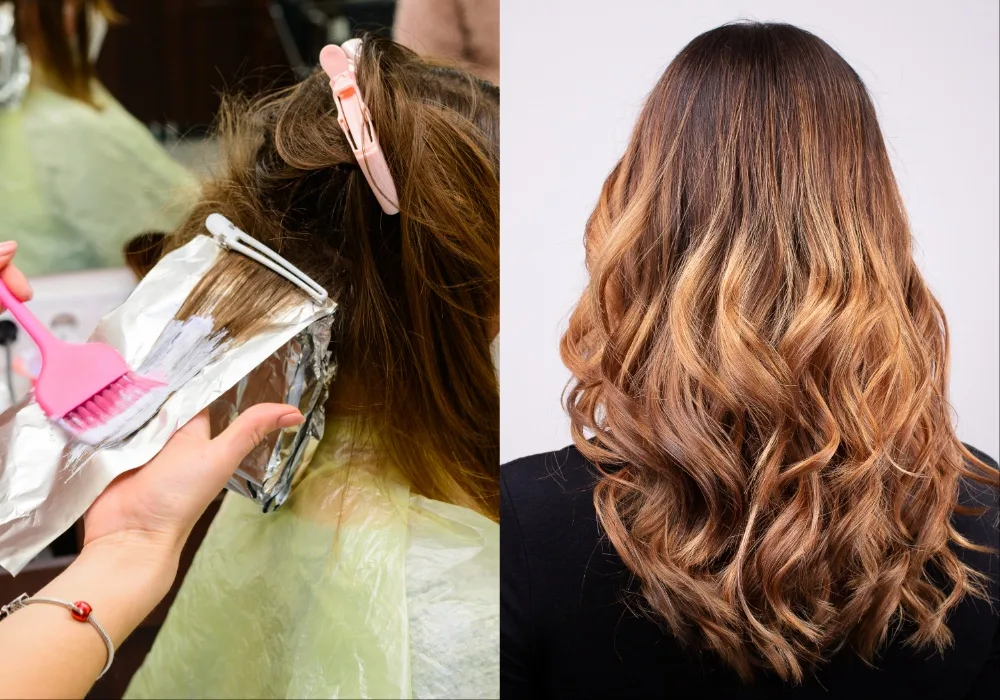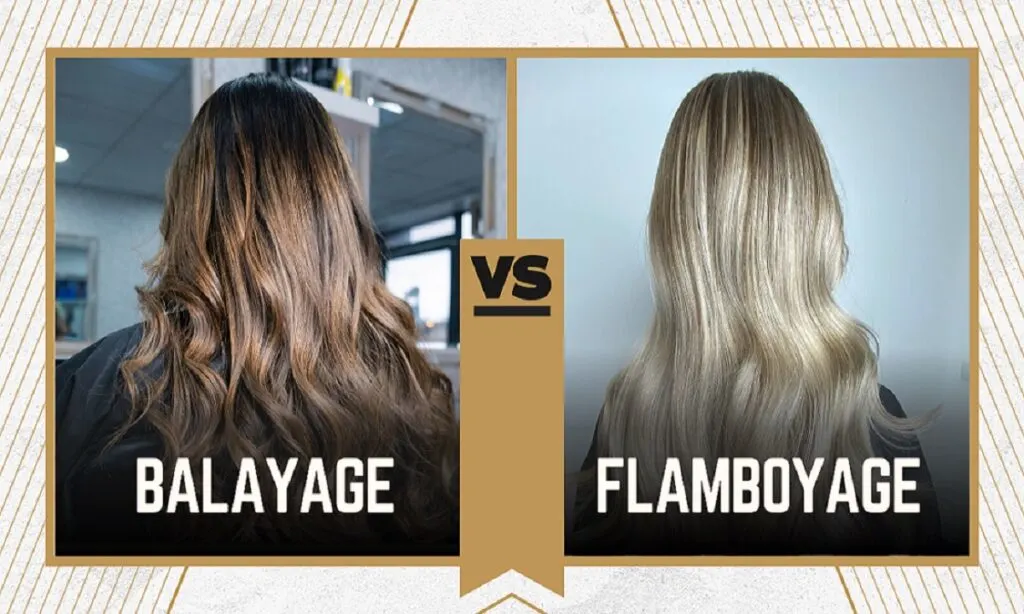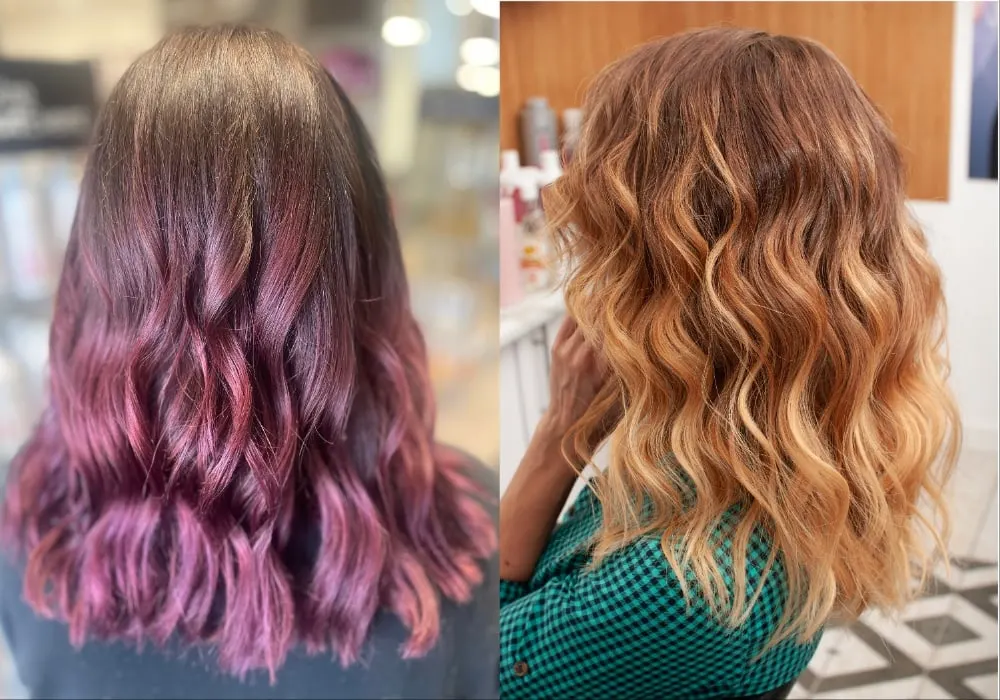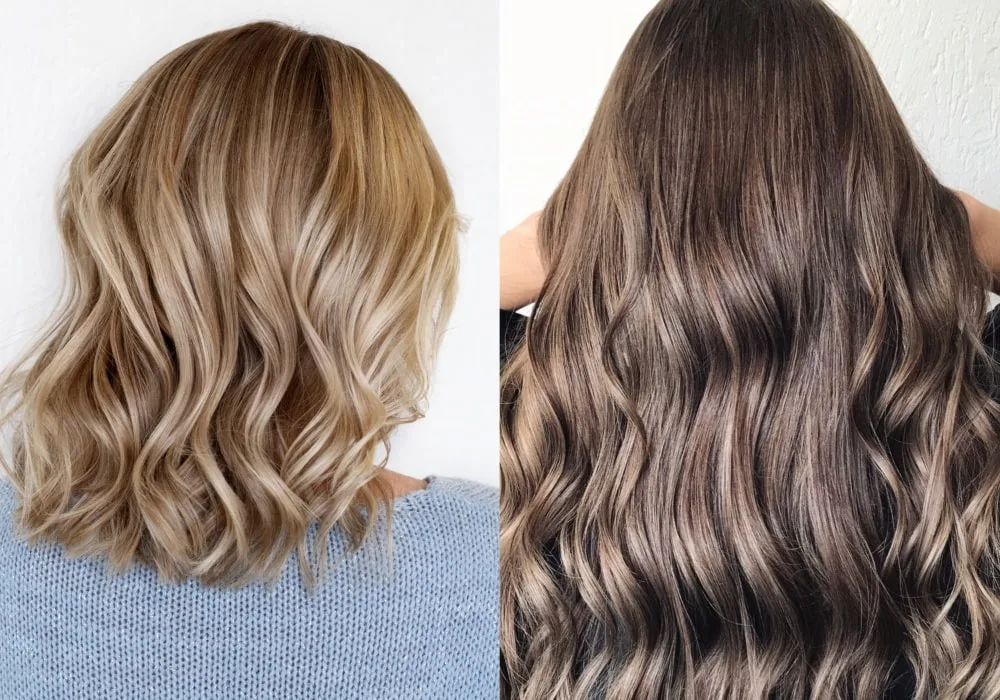Getting your hair done in the salon can be overwhelming, especially when it’s time for a new look. There are so many different terms not only for the hair coloring services themselves but for the array of different hairstyles that you’re trying to decide between.
Two very popular hair coloring techniques that have been trending for almost a decade are balayage and flamboyage. To make things even more confusing, these two techniques sound almost the same. So, knowing the differences between balayage and flamboyage is essential before you opt for one.
Key Differences Between Balayage and Flamboyage
Flamboyage and balayage can look very similar to the untrained eye. However, you’ll want to understand the subtle differences between the two techniques because getting one and not the other can make or break your hair color dreams.
First, let’s go over balayage vs flamboyage technique:
Balayage Technique

Balayage is a French term which means ‘to sweep’. Traditional balayage is done by painting (aka sweeping) hair color onto the hair, using a color brush and a paddle or the back of the hand for saturation.
It is a free-hand technique where the stylist uses their artistic creativity to choose where to paint the hair color. The stylist will normally paint the hair with a bleach or hair lightener in places where the sun would normally lighten hair naturally.
Using each client’s natural hair growth pattern as their guide. For balayage placement, think around your face, in the crown area and on the ends of the hair.
Balayage was started in the 1970s but has grown in popularity over the decades. People have been choosing balayage more often over traditional highlights because of its ultra-blended and sunkissed look.
Balayage grows out much more seamlessly than traditional highlights because the way the hand painting is done, it keeps the color the softest at the root and the brightest towards the ends. It requires less salon maintenance and can actually get even more beautiful and lived-in as you wear it.
Flamboyage Technique

Flamboyage is a much newer technique than balayage. Flamboyage is thought to have started in the 2010s when the popularity of balayage really took off into the mainstream.
Instead of using a free-hand painting technique like balayage, flamboyage uses adhesive strips in the hair (often called flamboyage strips or flamboyage mesh).
The adhesive strips are sticky, once the stylist places them in the hair, they lift up one side. The side that lifts up takes some hair with it while leaving some behind. The hair left behind is the hair the stylist will end up coloring. Using these strips is what gives flamboyage its soft blend.
These strips also allow the hair stylist to put color in strategic places in the hair instead of the free-hand technique. It also allows the hair stylist to use multiple colors (usually from darkest to lightest) in one strip, creating a soft color gradient.
Flamboyage has been described as a combination of a balayage and an ombre. In other words, it gives you the softness of a balayage with the gradation of an ombre.
How to Choose Between Balayage and Flamboyage

Now that we’ve gone over the techniques of Balayage and Flamboyage, you’re probably wondering how to know which one to choose. Here is some advice on how to pick the technique that will get you to the hair color of your dreams!
When to Choose Balayage?
- If you’ve done traditional highlights in the past and loved the look but are just wanting a little softer at the root
- If you’re looking for a hair color that is sun-kissed and very natural. You would love for people to think this is the hair color that grew out of your head!
- You don’t want to deal with any color fading. You love the idea of your hand-painted highlights to be all one color of blonde and use your natural hair color as the dimension.
- You don’t want a huge difference between the top of your hair and the bottom, balayage gives you a very subtle depth at the top of your hair and a very subtle pop of brightness on the ends
Examples of Balayage Hair Color

As you can see in these photos, the hair is very blended and the top has a subtle depth to it.
Balayage looks gorgeous on brunette hair. It’s so natural and sunkissed, leaving just a little pop of brightness on the ends.
The traditional blonde balayage look is a great example of the natural, lived-in color balayage can give you.
When to Choose Flamboyage?
- You want a softer ombre look aka a sombre! You love the gradient effect the ombre gives you but with softer colors and placement.
- You want to see different color shades and tones in your hair. Not just your natural hair color with a lighter highlight.
- You want to see a larger contrast between the top of your hair and the ends. You love the idea of a dark root with a bigger pop of brightness on the ends!
- You want a unique look and something super customizable to you.
Examples of Flamboyage Hair Color

You can see the way the hair color softly transitions from the dark root to the light ends in a flawless way.
If you want to incorporate colors into a subtle ombre, this is a perfect example of how flamboyage can be used for exactly that.
This is a beautiful example of how flamboyage can be really soft and graceful, giving you just that little bit of an ombre effect on the ends.
Balayage Vs. Flamboyage: A Quick Look
| Balayage | Flamboyage | |
|---|---|---|
| Meaning | A French term that means ‘to sweep’. | A term coined around the 2010s, combining the softness of balayage with the gradation of ombre. |
| Technique | Free-hand painting technique, the stylist uses a color brush and a paddle, or the back of the hand for saturation. | Uses adhesive strips (flamboyage strips or flamboyage mesh) for precise and strategic color placement. |
| Color Placement | Color is applied where the sun would naturally lighten the hair. | Adhesive strips are used to select which hair strands to color. |
| Outcome | Gives a soft, sun-kissed effect, which grows out seamlessly and requires less maintenance. | Provides a soft blend with a subtle ombre effect using multiple colors, resulting in a soft gradient. |
| Ideal For | Those who love a natural look with subtle depth at the top and brightness at the ends. | Those who want different color shades and tones in their hair, with a bigger contrast between the top and bottom of their hair. |
| Key Benefit | Lower maintenance, and the color grows out seamlessly for a lived-in look. | Provides a unique, customized look with more color variation and depth. |
| Considerations | Color tends to be monochromatic with natural hair color providing the dimension. | Allows for multiple colors in one application, creating a soft color gradient. |
Whichever you end up choosing, whether it be Balayage or Flamboyage, your hair color will be absolutely beautiful. You now have all of the information to choose what will be best for your look and hair!
Key things to Remember:
- Balayage and Flamboyage have subtle, yet important differences.
- Balayage is a soft, hand-painted highlight that gives a sun-kissed effect.
- Flamboyage is done with adhesive strips and uses multiple colors, giving you a subtle ombre look.
- Both techniques are beautiful and you can’t go wrong with either! You’re choosing between sun-kissed beach babe and dimensional, soft ombre vibes!
Trending Topics
